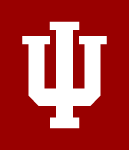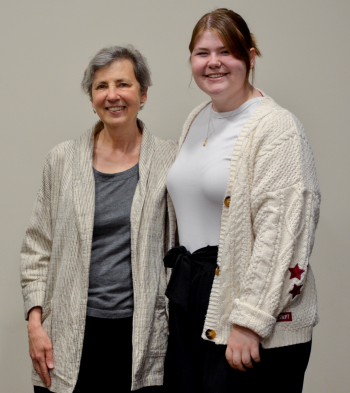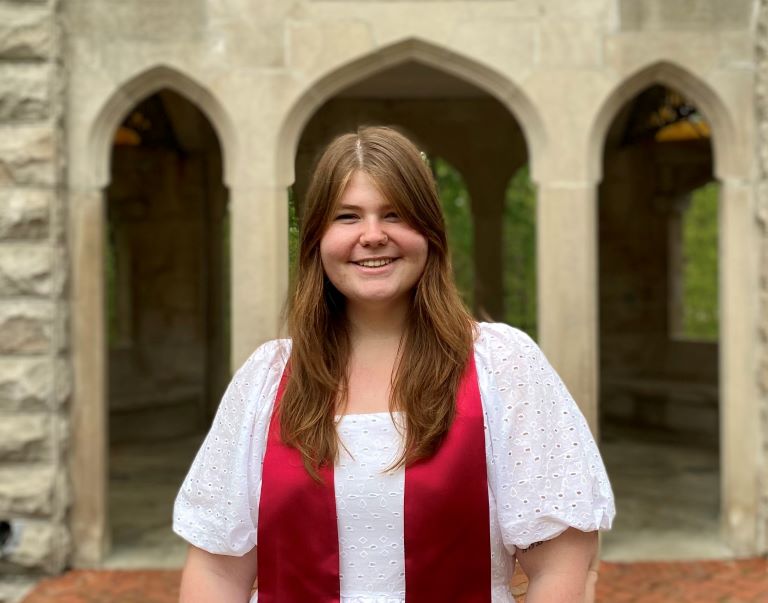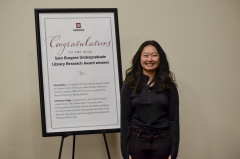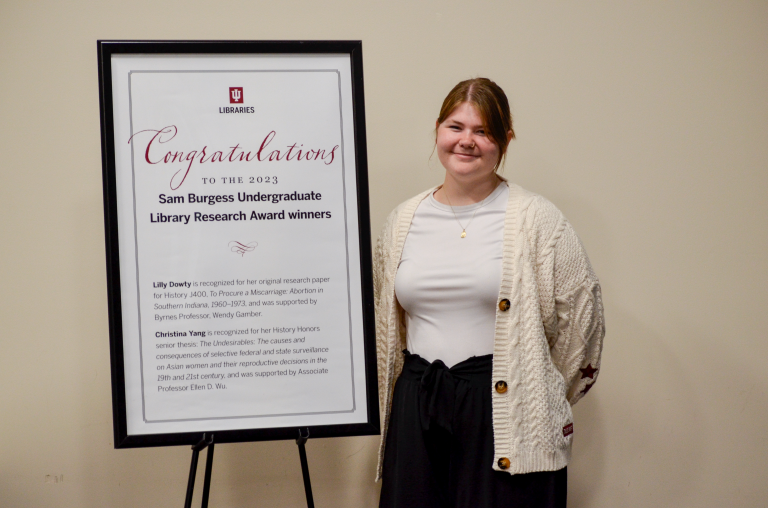
Lilly Dowty was recognized for her efforts at the IU Libraries Spring Deans’ Advisory Board meeting. Photo courtesy of Ellie Pursley
The Sam Burgess Undergraduate Research Award recognizes outstanding undergraduate research every year. The Indiana University Libraries Awards and Scholarship Committee focuses on how that research was performed and the use of library resources, honoring students for their thorough employment and creative use of databases, special collections, and other resources such as interviews and the Indiana State Archives. For the 2022-2023 school year, there were two winners: Lilly Dowty and Christina Yang.
Lilly Dowty, a history major with a gender studies minor, heard about the Burgess opportunity from her professor, Dr. Wendy Gamber, after writing her paper for HIST-J400 Research Seminar in History. Gamber felt Lilly was an exceptionally strong candidate. “I love research,” Lilly said, “especially history research. There's always some new story to tell, some new document to find, and we're creating history every day.”
Behind the research: using interest to fuel the project
“The IU Archives and their reading room at Wells Library were the foundation of my research,” Lilly explained. Her paper, “'To Procure a Miscarriage': Abortion in Southern Indiana, 1960-1973” utilized the Martha Vicinus collection in the Archives. Dr. Vicinus, an IU English professor from 1968-1982, was involved in women’s organizations in Bloomington; presided over the Bloomington chapter of the American Federation of Teachers from 1975-1976; helped create IU’s Women’s Studies (now Gender Studies) program; and was an expert on Victorian literature.
Lilly was interested in how small-town Indiana dealt with the topic of abortion before Roe vs. Wade. “Another library resource that was incredibly valuable to my project was the IU Bicentennial Oral History Project,” she shared. This creative resource gave Lilly access to some of the voices in the Bloomington women’s movement in the 1960s and 1970s. When she found the oral histories, she “dove headfirst and was just so amazed at the source,” she said. “My paper snowballed from there.”
Besides primary sources from the Archives and oral history project, Lilly utilized the services of Government Information, Maps, and Microform (GIMMS), multiple databases, research guides, books, and journals. As Lilly explained, “There's just something so special about connecting the pieces in different sources and building a narrative out of them and developing the history from what we have.”
